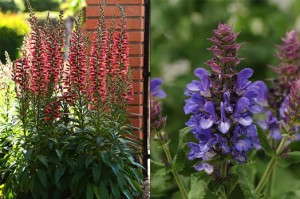Why You Will Still Grow Today’s Big Perennial 10 Years From Now

Drought and heat tolerant perennials like lavender ‘Meerlo’ make sense for water-conscious consumers.
Choose the next big perennial to captivate the market — it’s tantamount to being a kid in a candy store — committing to one favorite sweet is unimaginable. With the virtual smorgasbord of perennial genetics available today, breeders feel the same way. Who’s to say what variety surpasses the rest?
Dan Heims, president of Terra Nova Nurseries, sums it up best.
“It’s the one that you love every time you see it, one that performs over and above all other varieties.”
Most breeders heartily agree. The question is not what will be the next big perennial, but rather what perennial performs well enough in the garden to have staying power in the market.
Extensive Trialing, Superior Genetics Generate Satisfaction
Compact, low maintenance, drought tolerant, versatile — it’s the current market definition of a good perennial. But breeders take that one step further — a great perennial will flourish years after its debut.
“Today’s new and different is tomorrow’s tried and true, if we do our job right,” says Karl Batschke, global perennial product manager for Darwin Perennials.
To thoroughly trial a perennial, Batschke says you must rely heavily on natural timing to see how a plant normally behaves. Proper trialing results in plants that become a standard in the marketplace because they give consumers a long period of satisfaction.
Heims shares Batschke’s philosophy.
“Nothing we do is short-term,” Heims says. “Customers may depart briefly for cheaper alternatives, but they often return for superior genetics.”
For growers, those superior genetics mean uniform plants that are fast-rooting with many well-branched shoots, as well as strong growth without the need of PGRs, Heims says. For the homeowner, this means strong plants that perform under a variety of conditions, are repeat blooming and produce maximum value for the dollar.
“Plants should be a win-win for the grower and the consumer,” Heims says. “If both groups are not happy, we have failed.”
Demand For Low Maintenance, Drought-Tolerant Perennials Is Up
Apart from longevity and garden performance, breeders know that other plant characteristics contribute to mainstay perennials. They pay close attention to current trends that could swing the market in a new direction.
Christa Steerwyk, marketing director at Walters Gardens, sees demand increasing for bare-root plants over plugs, which is why Walters has worked hard at getting its baptisia and hibiscus bare root plants just the right size for containers.
“For years, the big demand has been for plug perennials,” she says. “In the last few years, it has turned back toward the field. Plugs are still popular, but there is more demand for bareroot. Our customers are seeing the advantage of a quick turnaround time.”
For Melanie Neff, new products manager at Aris Green Leaf Plants, drought tolerant items like agastache, sedum and perovskia will take off more than any one genus. Plants like the company’s new gaillardia ‘Mesa Peach,’ which tolerates hot, dry sites and high humidity, will appeal to the fast-growing segment of water-conscious consumers, she says.
Sunset Western Garden Collection Program Developer Janet Sluis says her company focuses on garden performance by region, so in the West it looks for low-water-use plants like agapanthus, lavender, salvia and gaillardia.
Lavender ‘Meerlo’ joined the Sunset Western Garden Collection and the Southern Living Plant Collection in 2015. Sluis says it is drought and heat tolerant, has an amazing fragrance and holds its variegation year round in Zone 9.
Tony Avent, owner of Plant Delights Nursery, says people’s gardens may be getting smaller, but they are not getting shorter.
“Tall plants are going to be the next big thing,” he says. “Breeders who start to move away from dwarf perennial varieties in favor of tall plants will be ahead of the game when demand turns.”

Digitalis ‘Foxlight Ruby Glow’ (left) and Salvia ‘Blue Marvel’ (right) from Darwin Perennials.
New Short-Term Varieties May Redefine The Category
The trend toward breeding shorter, more compact perennials has opened the door for the popularity of container perennials, and Batschke says he sees this trend going in two different directions.
“On one side, you have plants that are meant for long-term use in the landscape, ones that have been extensively trialed and so forth,” he says. “Then there are perennials coming into the market that serve the function of texture and interest in containers and are more of a decorator item than a garden item.”
As an example, Batschke points to Darwin Perennials’ Foxlight digitalis series, as a tender perennial that is more of a container plant in the north and a short-lived perennial in the south. In contrast, salvia ‘Blue Marvel,’ with hardiness to -30°F, lasts longer in the garden.
Batschke says at some point, our industry will have to deal with the issue of a throw-away perennial versus a garden perennial, and maybe come up with a new term that lets consumers know what to expect in terms of performance.
“My plea to plant breeders is not to annualize genera to the point that they no longer fit the definition of a perennial (living two years or more),“ Sluis says. “Many new perennials we trialed did not pass that test. Longer blooming and reblooming traits are key, but not at the expense of garden performance.”
And performance is ultimately the goal. The next big perennial will perform well for the grower and the consumer, and it will be bred to last.GG










